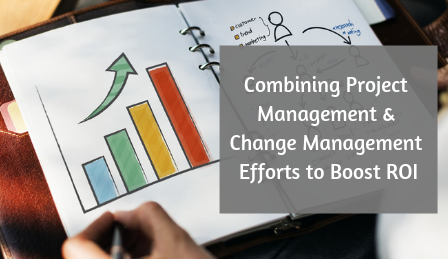Having delivered many Prosci Change Management Certification Programmes, I often get asked questions on the required skills or competencies from Change Practitioners. We often talk about HR skills, Training skills and communication skills.
Indeed Prosci® Best Practices Research has identified four key attributes required from change management practitioners:
- Excellent communication skills
- Change management competency
- Flexibility
- Interpersonal skills (and teamwork)
In addition, the following experience is helpful to their change work:
- Business influence
- Commitment to the change
- Knowledge of the business
Not only do Change Practitioners need the above attributes, they also need a solid change management framework. The Prosci methodology offers this and it is broken down into three phases, all designed with the objective of increasing proficient usage and adoption of the new capabilities being built by the project team for the benefit of staff:
Phase 1: Prepare Approach
This is where you develop a customised and comprehensive approach that positions your change for success:
- Define Success- what are you trying to achieve?
- Define Impact- how does the change impact individuals?
- Define Approach- what steps will you need to take to achieve project success?
The output of Phase 1 acts as input into Phase 2 where you Manage the Change.
Phase 2: Manage Change
The activities in this phase involve developing plans and actions that help move individuals and the organisation through ADKAR transitions. Prosci's 4 core plans include:
- Sponsor Plan
- People Manager Plan
- Communications Plan
- Training Plan
Each of these plans once completed, will translate into a set of tasks and activities that need to be managed by the change manager, even though other stakeholders will execute most of the actions within these plans. These tasks need to be completed on, time, in budget and to the right level of quality. This in project management ‘speak’ is known as the triple constraint.
Phase 3: Sustain Outcomes
This is where we make sure that the change is sustained. We need to:
- Review Performance- reflect on performance to confirm desired results.
- Activate Sustainment- practitioners focus on implementing actions to sustain change outcomes
- Transfer Ownership- practitioners establish how to carry sustainment efforts forward, with important activities that include transferring knowledge and assets.
These are very specific tasks and activities that will need to be planned, managed and tracked post implementation.
Project managers make use of various tools to ensure they manage the triple constraint challenge of balancing time, cost and quality. One such tool is the Gantt Chart. Tasks and activities are documented in a Gantt chart to track the progress of the project.
Critically, change management activities need to be integrated into the overall project management plan and these tasks need to be tracked and managed, with any dependencies planned for in the schedule of tasks. Each task needs to have resources, duration and costs allocated.
Therefore to ensure success of the change , the change manager needs to ‘project manage’ these activities in their change management plan; and to do this successfully, the change manager needs to have at least some basic project management skills for change.
Here’s where CMC Global can help, we’ve developed a one-day Project Management for Change Skills4Change workshop.In this virtual or in-person workshop you’ll receive a variety of tools, templates, case studies and execution plans, and gain hands-on, practical experience all under the guidance of a CMC Global instructor with years of experience in Project Management.
We’ll transfer to you, our knowledge about project management key practices and introduce the standard project management concepts, terms and tools.
Throughout the day you’ll apply what you are learning to a real or fictitious project. You’ll access the CMC Global Project Management for Change Toolkit which is then yours to take away and use!
Find out more or take a look at the leaflet.


